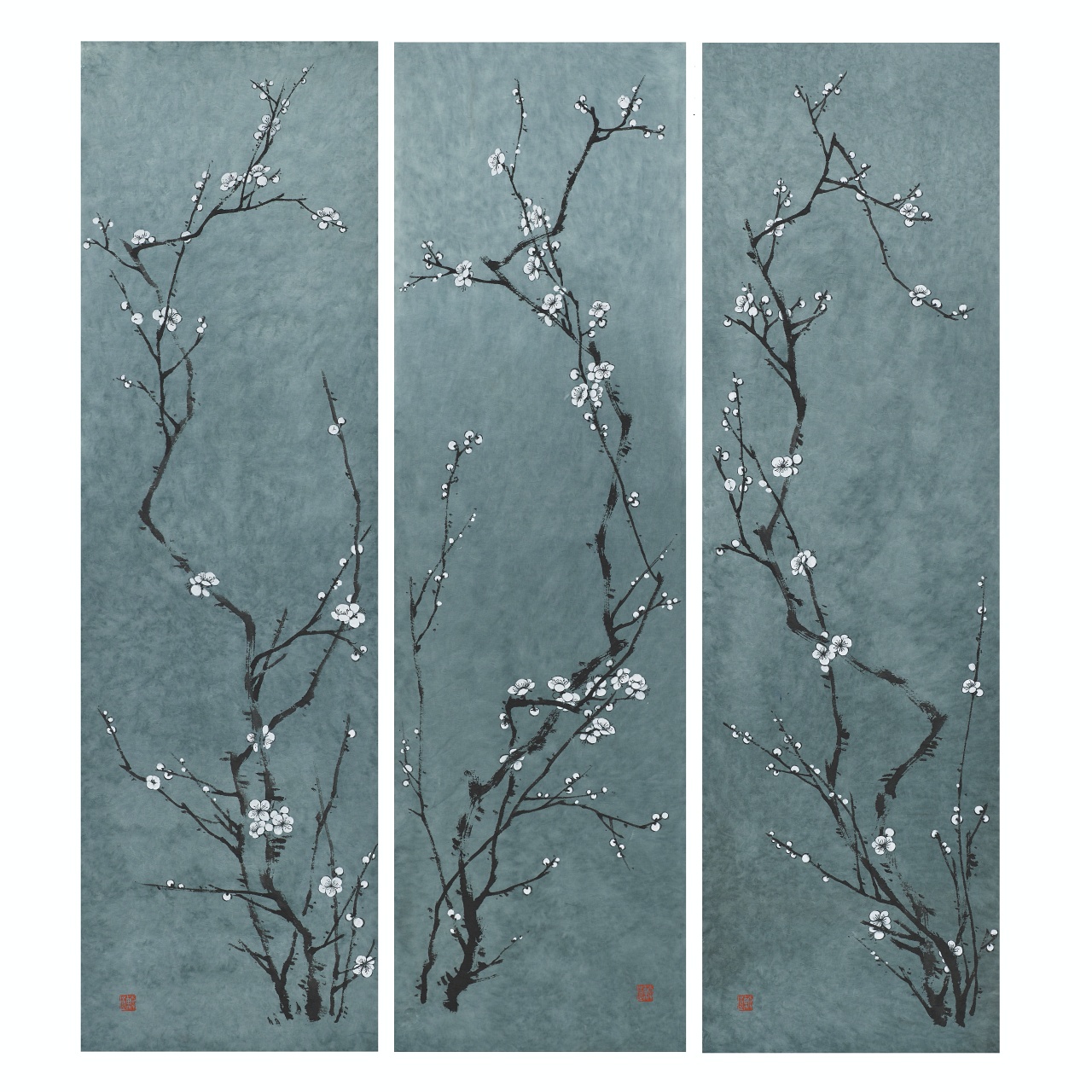작가 노트 #1

청매(靑梅), 한지에 수묵담채, 각 105x30cm, 2018
뜻을 높이 여겼던 선인(先人)들은 이를 향해 가는 고독감과 확고한 의지를 사군자(四君子) 가운데서도 매화를 빌어 표현하였다. 자신과 비슷한 입장의 생태적 특성을 갖는 물상을 통해 자신을 동일시하거나, 자신을 알아주는 절친한 벗을 만난 듯 위로와 격려를 받으며, 그 대상과 깊은 애착을 갖고 교감하며 사랑하였다. 오늘날 매화가 상징하는 지조와 절개에 대해 얘기하는 것은 구태의연하거나, 쓸모없는 정신적 사치일 수도 있다. 그러나 소외와 좌절의 너머, 물질지향의 저편에서 의(義)를 지향하며 외롭고 고독한 자신의 길을 가는 이들에게 매화는 오늘날에도 봄의 전령 뿐 아니라, 고난 가운데서도 움트는 희망을 던져준다.
– 작가노트
Our ancestors who valued noble ideals eloquently expressed their solitude and firm will in working toward them through symbols such as the plum blossom, which is one of the Sagunja(四君子, Four Gentlmen: refers to four gracious plants – plum blossom, orchid, chrysanthemum, and bamboo). They identified the bloom, which they saw as having similar ecological characteristics as they had with themselves. They were comforted and encouraged by it as if it were a close friend; they had a deep attachment to and affection for it, and echoed, reflected and complemented it. Today it may sound obsolete, useless and extravagant to talk about the fidelity and chastity symbolized by the plum blossom. But to those who were taking their own lonely paths in pursuit of righteousness beyound materialism and overcoming alienation and frustration, the plum blossom was not only a messenger of spring but also a hope in the midst of suffering.
– artist statement
